Today’s piece is another chapter in my India travel diaries — I’ve previously written about Jaipur here and here, explored rekindling childhood friendships in Lucknow here, and most recently, delved into serendipity while traveling here. If this was forwarded to you, be sure to subscribe so you can join me on this journey.
Fire and fury in the land of the Gods
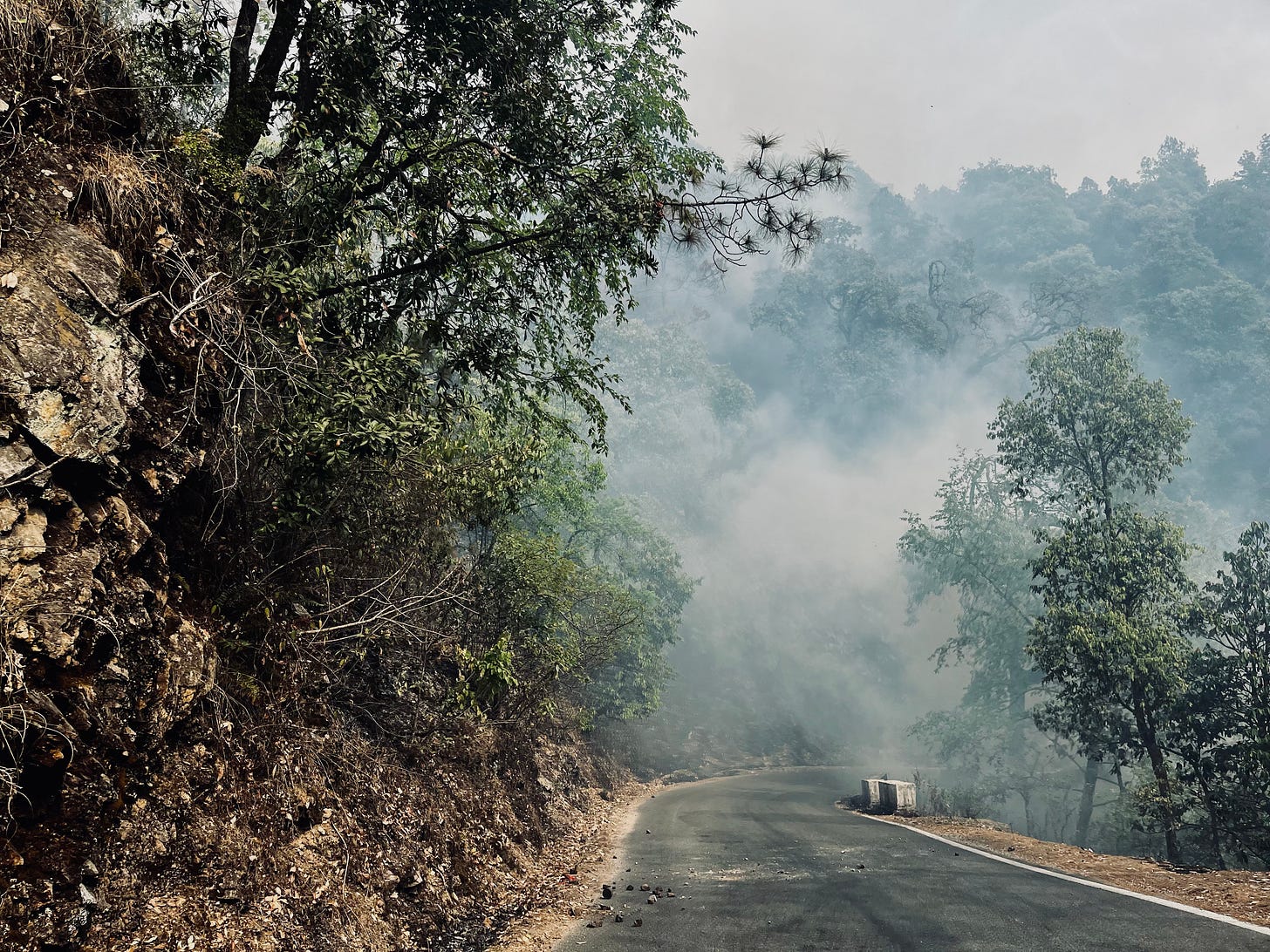
All week, the landscape has been draped in hues of dusk and smog, a thick blanket moving across the great flanks of hills — peppered as they are with brief settlements of paharis (the local name for the mountain people). Invisible to the eye due to the unsettled soot, but often felt, are the distant peaks of the Kumaoni Himalayas — names I’d heard of since I was a child: Trishul, Nanda Devi, and the others.
Uttarakhand, which I’ve called home for the last two weeks and is colloquially hailed as Dev Bhoomi (the land of the Gods) due in part to the sheer number of hillside temples, has been grappling with recurring forest fires. The fires, when naturally occurring, have ecological utility as they help replenish the soil with much-needed nutrients, with a number of plants and animals having evolved to require these for balance.
This past week, however, the fires have escalated to such an alarming extent, reaching even the residential enclaves of the judicial capital, Nainital, that the government called in the forest department and the Indian army to help douse it. Moreover, there were fears that the fire might extend to sensitive military installations nearby, adding layers of complexity to the firefighting efforts.
Summer’s dry conditions and high temperatures often bring these fires to the rugged terrain and dense forests of the state, necessitating a watchful eye and swift action from authorities.
But despite the particularly alarming extent of wildfire, there is a serene calm, for most of the locals seem inured by the flames. Ravi, my driver and inadvertent guide as I traverse the serpentine ghats of Uttarakhand, shared a grim reality witnessed too often: some villagers set the hills on fire themselves in the hope of getting government aid. “It’s bearable for us humans, but it’s devastating for the wildlife, especially the birds,” he said.
The extent of the state’s diversity in flora and fauna is, in my opinion, quite under-appreciated: Despite being just the 20th most populated state in India, Uttarakhand boasts an astounding 7,000 species of plants, contributing to an impressive 31 percent of the country’s floral diversity. The state is also home to at least 102 species of mammals, 70 reptiles, 19 amphibians, 124 species of fish, and 600 species of birds, with 55 bird species marked as ‘threatened’ by the International Union for Conservation of Nature (IUCN). “In our small settlement alone, the diversity of birds has plummeted — numbers nearly halving since my childhood,” Ravi adds mournfully. The tragedy is in the timing — the summer months when the heat is both figuratively and literally high, also coincide with the hatching season of many of these endangered birds, worsening the situation.
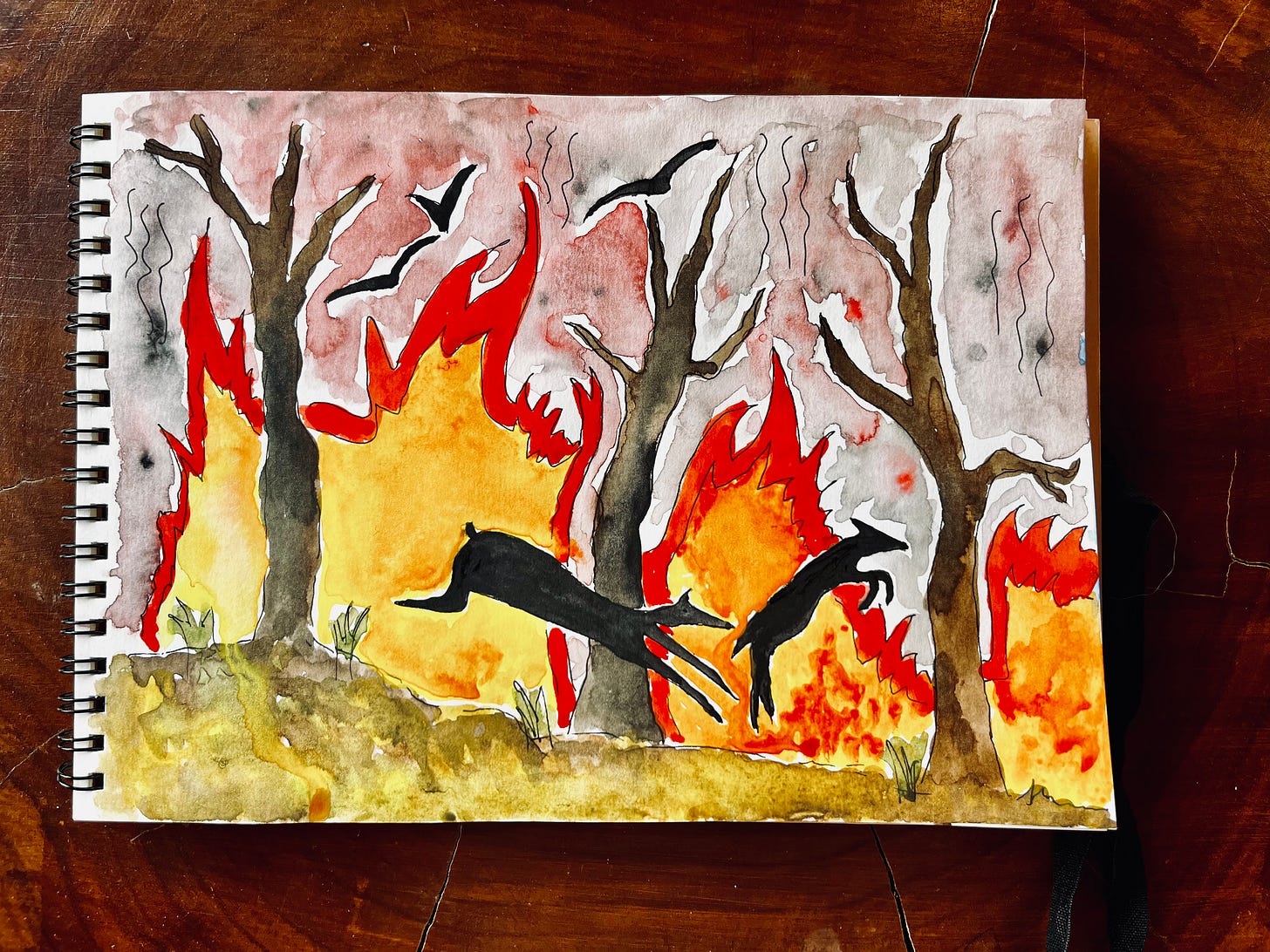
But there’s a resilience amongst the locals that’s admirable, for amidst this backdrop of natural adversity, Himanshu, the caretaker of the place I was staying at asked me if I wanted to join him in hiking up the local hill to visit a temple that would give us a good vantage point from where to see the vista, fire or otherwise. The timing of his proposal and the nonchalance with which he asked me reminded me of the meme, ‘India isn’t for beginners’. Although there was a tiny chance of encountering forest fires in the area, the prospect of hiking was too intriguing to decline. When in Dev Bhoomi, do as the Paharis do, am I right?
The hike, a few hundred metres up a steep hill, was arduous and tested my stamina and will, but every step brought a magnificent new view of the hills. Regrettably, the clarity of these views was marred by the smog from the nearby fires, masking the typically resplendent green mountains in the foreground and the snow-capped peaks farther away.
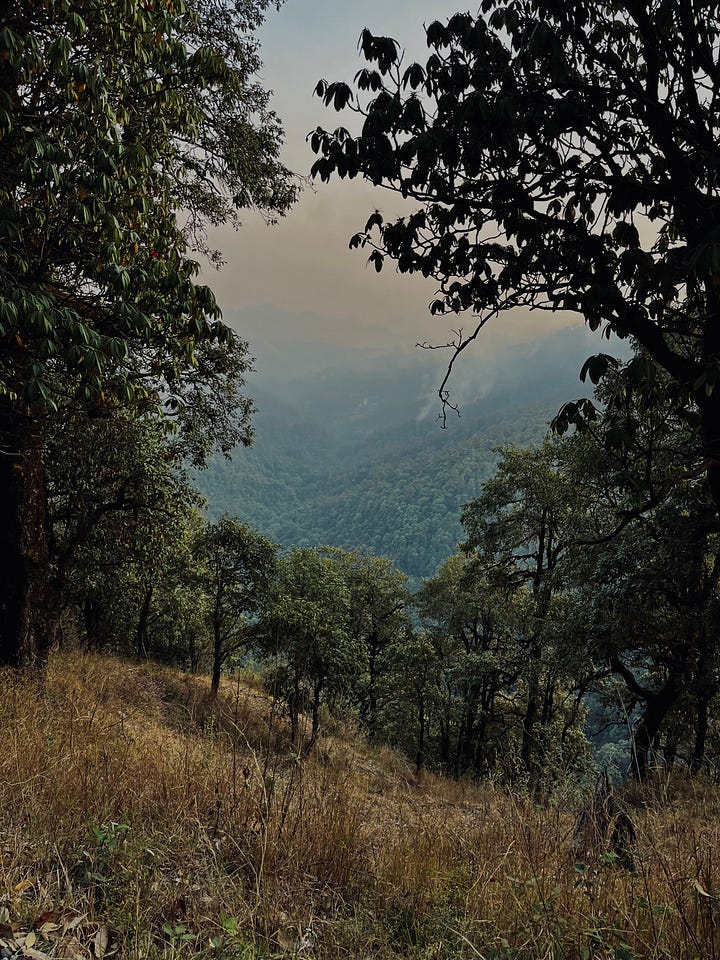
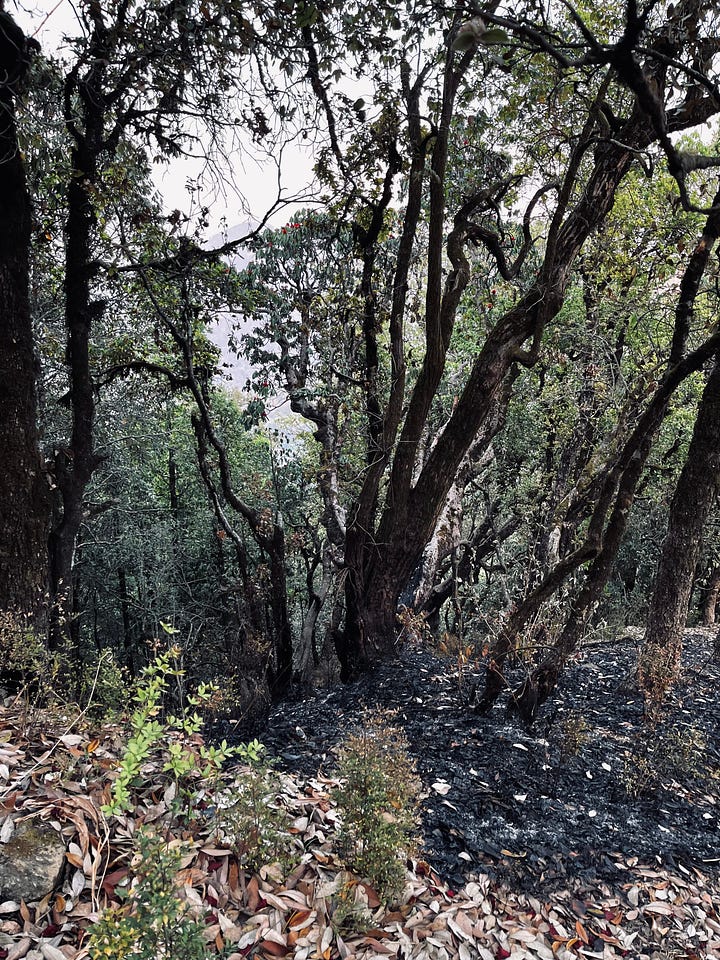
And yet, as I leave Uttarakhand today, the view left unseen gives me a reason to return — another trip waiting to be lived, another chapter waiting to be written … another pilgrimage in the land of the Gods, where the spiritual and the everyday mingle, and the din of the city gives way to the whispers of the wind and the tinkling of the temple bells.
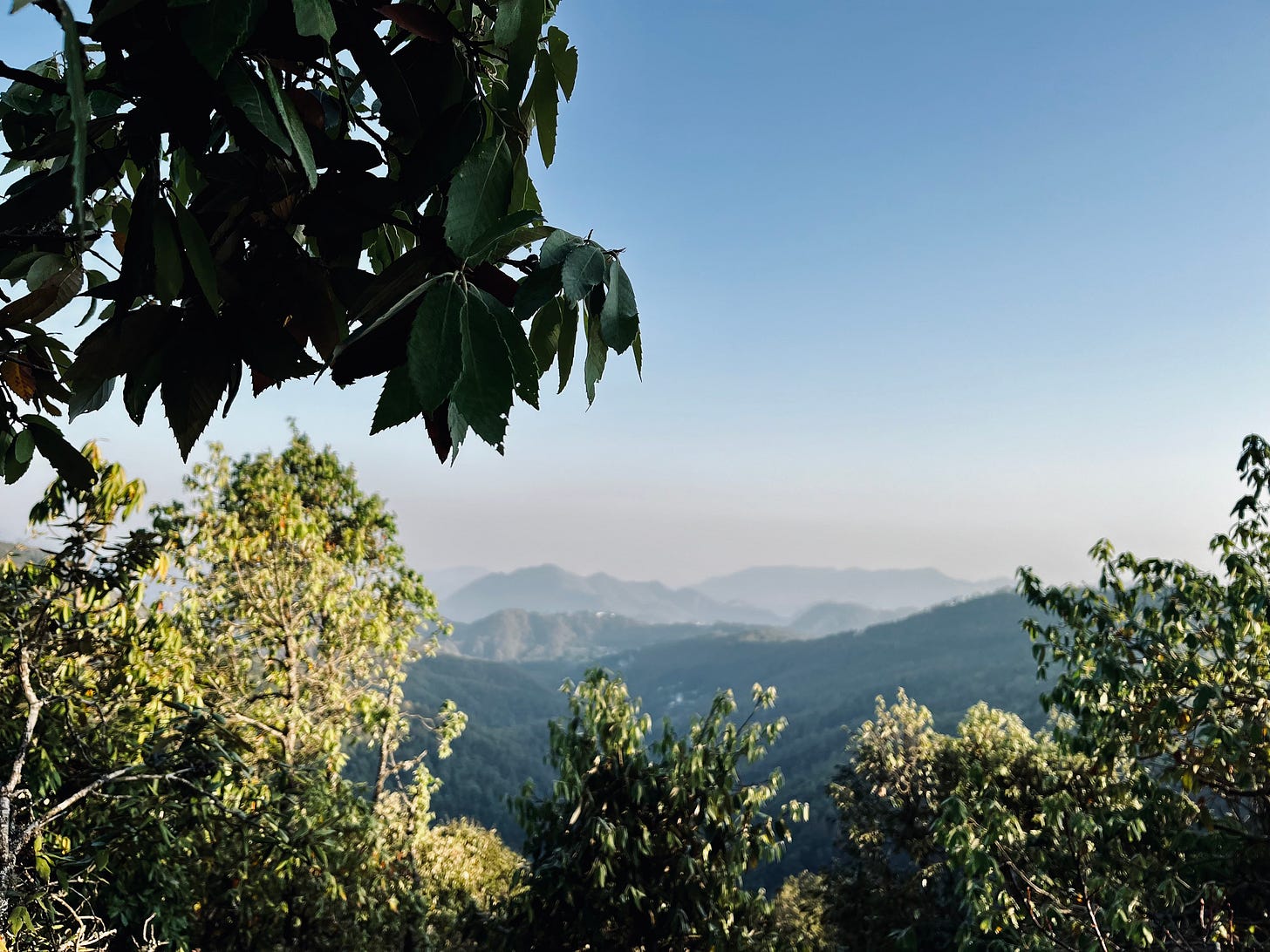
There’s much more I want to share about my journey — what else would you like to hear? Would you like a peek at some of the portraits I’ve taken of the vibrant locals of Uttarakhand, or clicks of the majestic mountains that towered over my travels? Perhaps my painted interpretations of these scenes might colour your interest, or reflections from my colourful hikes could elevate your curiosity — or would you want to hear about the actual devs (gods) and devis (goddesses) of Dev Bhoomi?
Hit reply and let me know your thoughts!




Beautiful piece, Nishad!
"..the din of the city gives way to the whispers of the wind and the tinkling of the temple bells." Loved this line. So evocative.